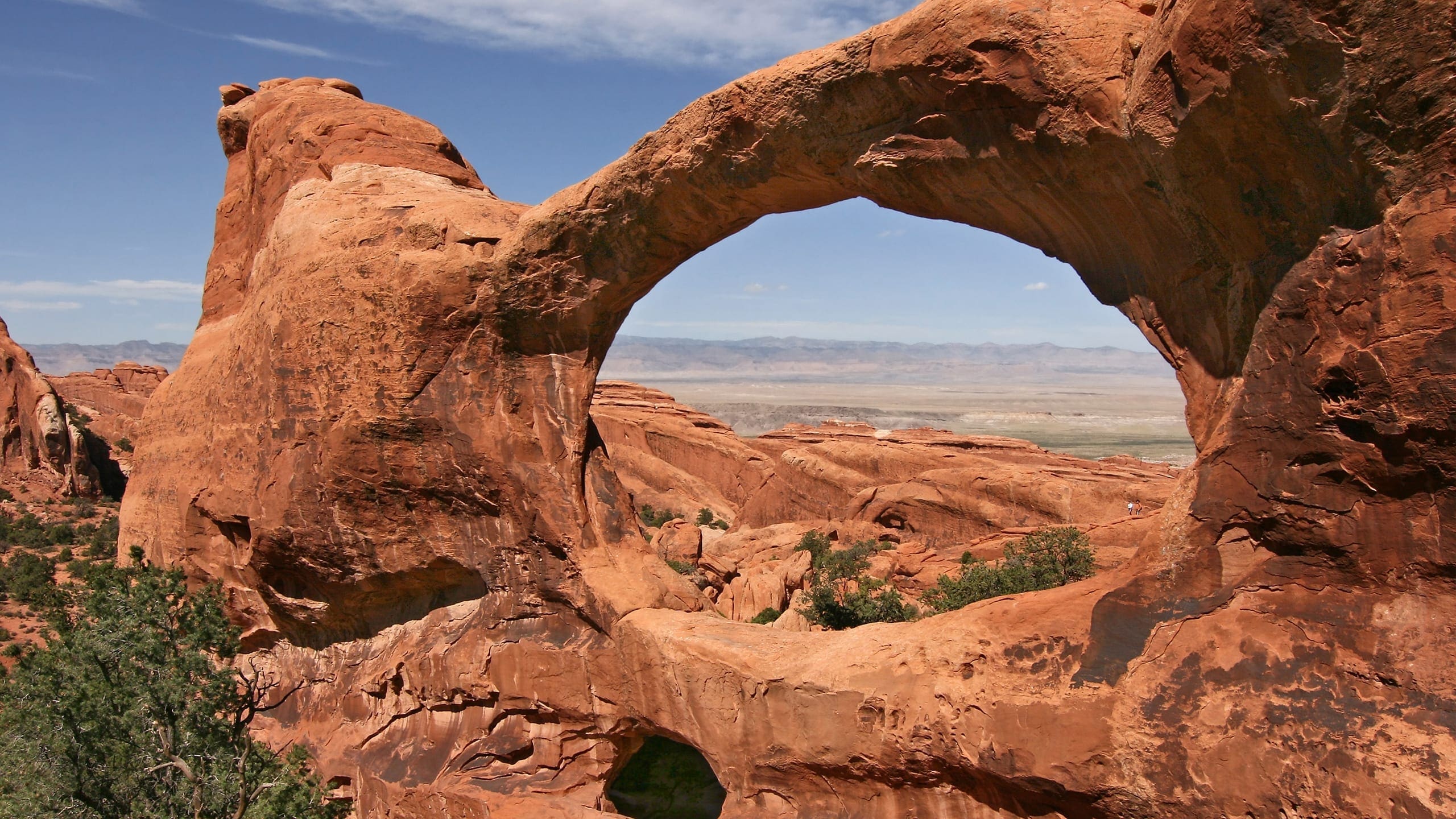About Arches National Park
Arches National Park is in the heart of canyon country in southeastern Utah and is considered one of America’s scenic wonders. The park preserves 76,679 acres of high desert on the Colorado Plateau, punctuated by rocky ridges, canyons, fins, towers, monoliths, pinnacles, and more than 2,000 arches. Delicate Arch has become an icon; it is the adopted symbol for the Utah license plate and was one of the images for the 2002 Winter Olympics in Salt Lake City, Utah. The nearby town of Moab is a major tourist destination that serves as a hub for a wide range of recreational activities in the surrounding region. The prominent La Sal Mountains to the southeast rise to more than 12,600 feet above sea level and provide a scenic background for the park. Elevations in the park range from 4,085 to 5,653 feet above sea level.
The park’s distinctive landscapes are products of multiple geologic processes including salt tectonics, sedimentation, folding and faulting, erosion, and salt dissolution operating over hundreds of millions of years. Diverse geologic formations, landforms, and soils shape patterns in the distribution and abundance of plants and animals through effects on the availability of scarce water resources in this arid environment where annual precipitation averages less than 9 inches.
Plants and animals of the park are able to deal with extreme variations in temperature and moisture, as well as intense sunlight. Vegetation is sparse overall and interspaces among plants often are dominated by biological crust communities composed of cyanobacteria, mosses, and lichens. These soil-surface communities are important for stabilizing soils, preventing erosion, and retaining water and nutrients needed by other plants and animals. Visitors also may notice pinyon pine, juniper, and many species of grasses, cacti, and shrubs. Moisture-dependent plants like cottonwoods, willows, and ferns are found along the rare perennial streams, in washes, or in alcoves with dripping springs. Wildflowers appear after spring rains. Notable wildlife includes mule deer, coyotes, raptors such as golden eagles and peregrine falcons, desert bighorn sheep, and the seldom seen bobcat and mountain lion. Rattlesnakes, scorpions, and black widow spiders are present but encountered less frequently than squirrels, packrats, chipmunks, and rabbits. Common birds include ravens, pinyon jays, and red-tailed hawks.
Cultural resources in the park span at least 12,000 years of human occupation and activity. There are Paleoindian, Archaic, Fremont, ancestral Pueblo, and Ute archeological sites in the park, including lithic scatters, middens, pictographs, and petroglyphs. Historic resources include those left by explorers, miners, ranchers, and the Civilian Conservation Corps. There are six sites in Arches National Park that have been listed in the National Register of Historic Places, including a segment of the Old Spanish National Historic Trail.
Many of the park’s dramatic features are visible from the main road, which enters at the southern extremity and runs to Devils Garden in the northern part of the park, with two side roads along the way. A visitor center is just inside the entrance. More than a dozen hiking trails provide access to arches and other features and to the backcountry. The park offers a variety of recreational experiences including sightseeing, viewpoints/photo stops, hiking, interpretation, picnicking, special tours to the Fiery Furnace, backcountry and developed camping, rock climbing, canyoneering, bicycling (on established park roads), and nature study. Arches National Park is a great family park, with several trails and trail loops that offer moderate and easy day-hiking experiences.
Developed areas at Arches National Park can become extremely crowded during the busy seasons. Since 2010 the park has received more than 1 million visitors each year. The park’s season for visitation is from March through September. Recreation visits peak in the months of May, June, and September and daily counts at the park’s visitor center have recorded up to 3,000–4,000 visitors.
Arches National Park was first established as a national monument in 1929, and later became a national park in 1971. The park is within the “Grand Circle,” a broad geographic region in the southwestern United States that encompasses more than 60 recreation sites in 5 states. The Grand Circle includes some of the Southwest’s most unique landscapes, attractions, scenic byways, and national park lands.
Source: Foundation Document – Arches National Park
Fast Facts:
| Date the Park was Established: | November 12, 1971 |
| Park Area (as of 2019): | 76,678.98 acres (310.3 km2) |
| Recreational Visitors (2018 Total): | 1663557 visitors |



